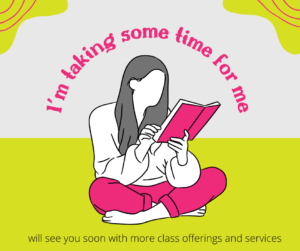Positive touch is such an essential part of your baby’s emotional and physical growth. Intuitively you will hold, cuddle and caress your baby. Massage is simply and extension of what comes naturally.
In parenting there is no one single way of caring for you baby – this also applies to massage. There are guidelines that should be considered but your baby won’t mind if you start at the head or the toes or if you massage the front or the back first after all, they don’t know you learnt a massage sequence!
Unlike adult massage which is often vigorous and sometimes involves manipulation and kneading of knotted muscles infant massage focuses on firm gentle flowing strokes. Your baby’s muscle mass is only a quarter of their body weight as compared to almost half in an adult, so the pressure and strokes should be gentle but firm enough to be stimulating.
Once you are comfortable and confident with the strokes you will develop your own style and sequence to suit you and your baby.
So onto the basic strokes…
Effleurage
Effleurage is one of the main techniques used in baby massage. These are long, smooth gliding strokes. These flowing strokes follow the contours of your baby’s body and usually both hands are working together to establish the flow and the rhythm. With a small young baby you may need to just use your fingers rather than the whole palm surface.
These long smooth strokes both stimulate the circulation but are also very relaxing. They can also be used to link together other massage strokes.
Kneading
Kneading it the gentle squeeze and release of the soft parts of your baby’s body. These are more focused strokes than effleurage. Smooth firm pressure should be applied to the part of the body being massaged and then relaxed.
Friction
Friction is small circular movements using the pads of the thumb or fingers.
Never massage over joints such as the knee, elbow or wrist as this will be uncomfortable for your baby and could cause damage.
Refining Your Technique
With practice you will learn what strokes you and your baby enjoy the most. The following are a few tips to help you to help you feel more confident and gain the most benefit from your massage sessions.
- Take a few moments before you start massaging your baby to let go of any stress or anxiety you may be feeling.
- Ensure touch is firm but gentle.
- Keep hands open and relaxed during the massage ensuring you make full contact with your baby’s skin with both your fingers and palms. Mould your whole hand around the contours of your baby.
- Approach strokes with firm confidence. This will reassure your baby.
- Keep strokes long, flowing and rhythmical. You will soon find yourself absorbed in these gentle repetitive movements.
- Avoid strokes that are light or fluttery – this will be irritating and overstimulate your baby.
- Aim to keep contact with your baby’s skin at all times. If for example you are needing to pause for more oil – keep one hand on your baby to maintain contact.
Safety First
- Always massage on the ground. Babies become slippery when covered with oil and may fall off change tables etc.
- Never massage a baby before or after a bath. Oil and water don’t mix! Babies will become slippery if oil is applied prior to a bath and babies under 1 year will be overstimulated if massaged immediately after a bath.
- Wait approx. 20 minutes after feeding before attempting massage to avoid chuck up.
As with anything practice will build confidence. With knowledge of the correct techniques and principles you will find a routine that suits you and your baby. As your baby grows you will then be able to adapt you knowledge and skills to their changing needs. Most importantly, enjoy this special time with your baby!
Related Information and Articles
